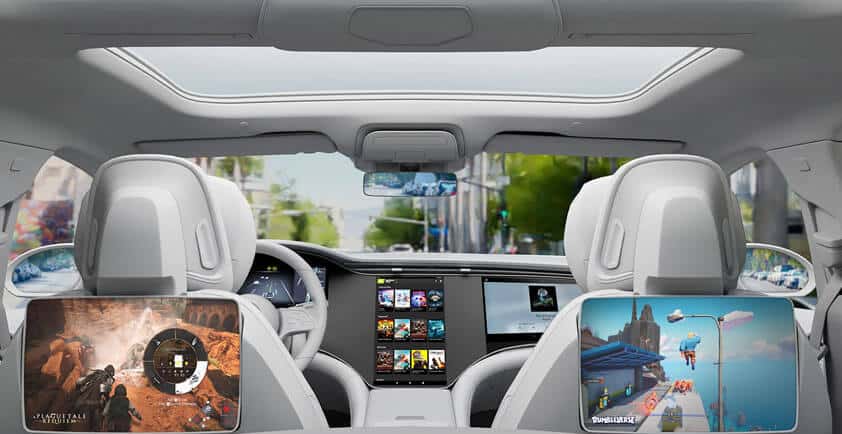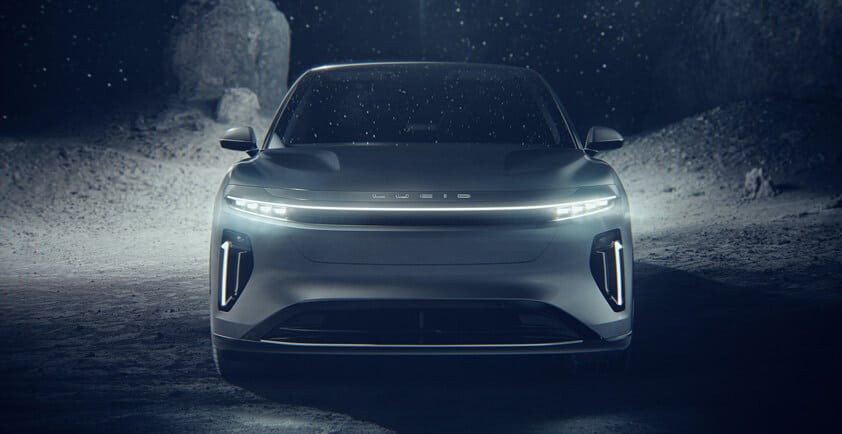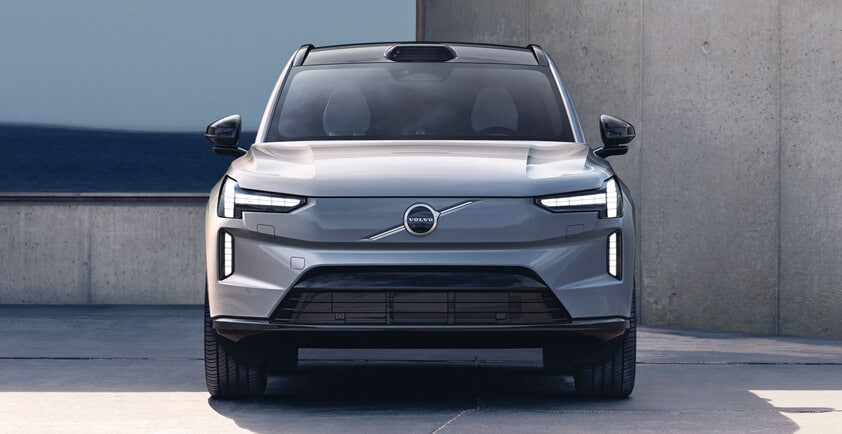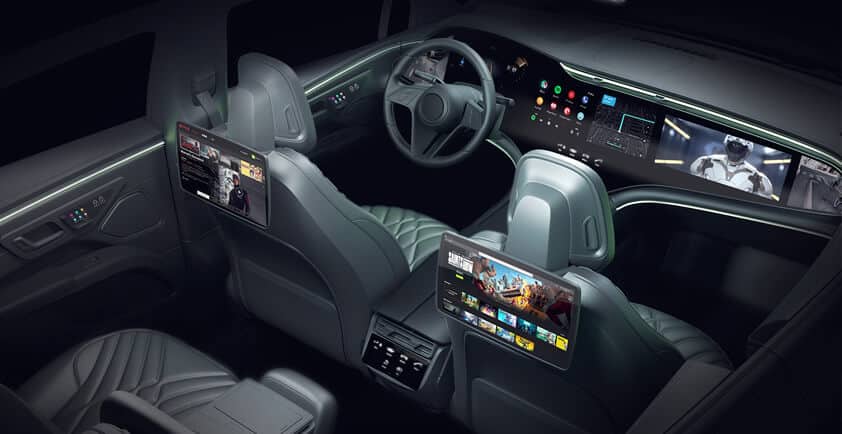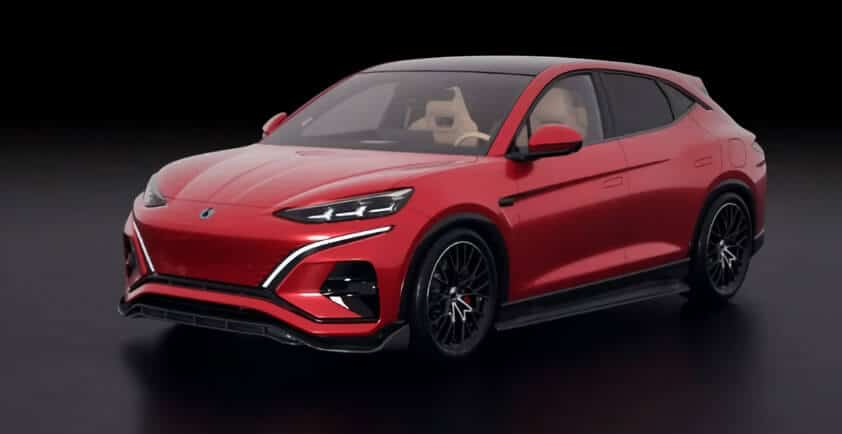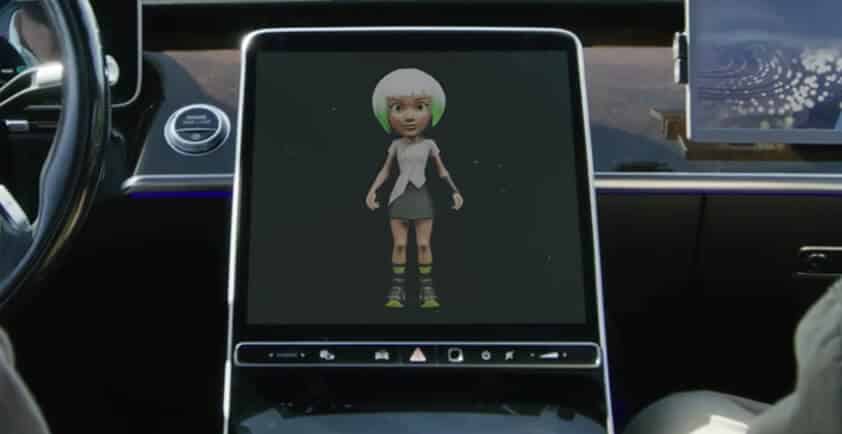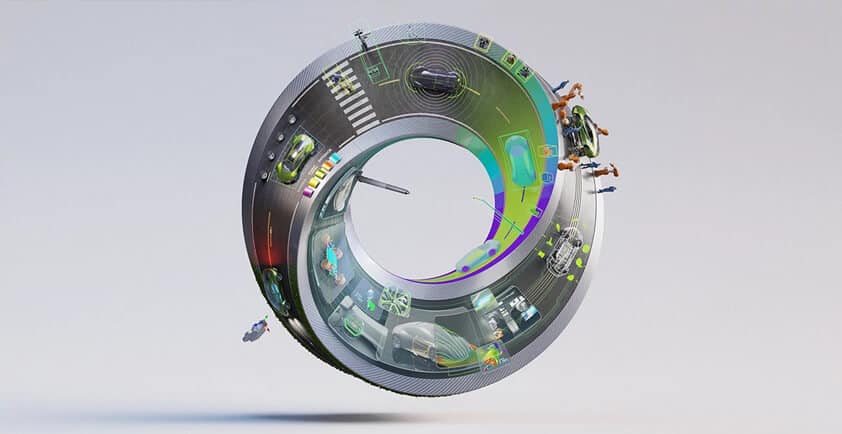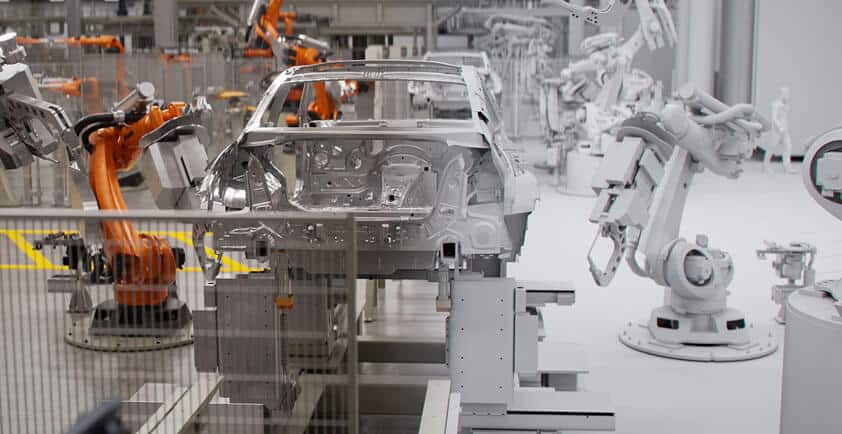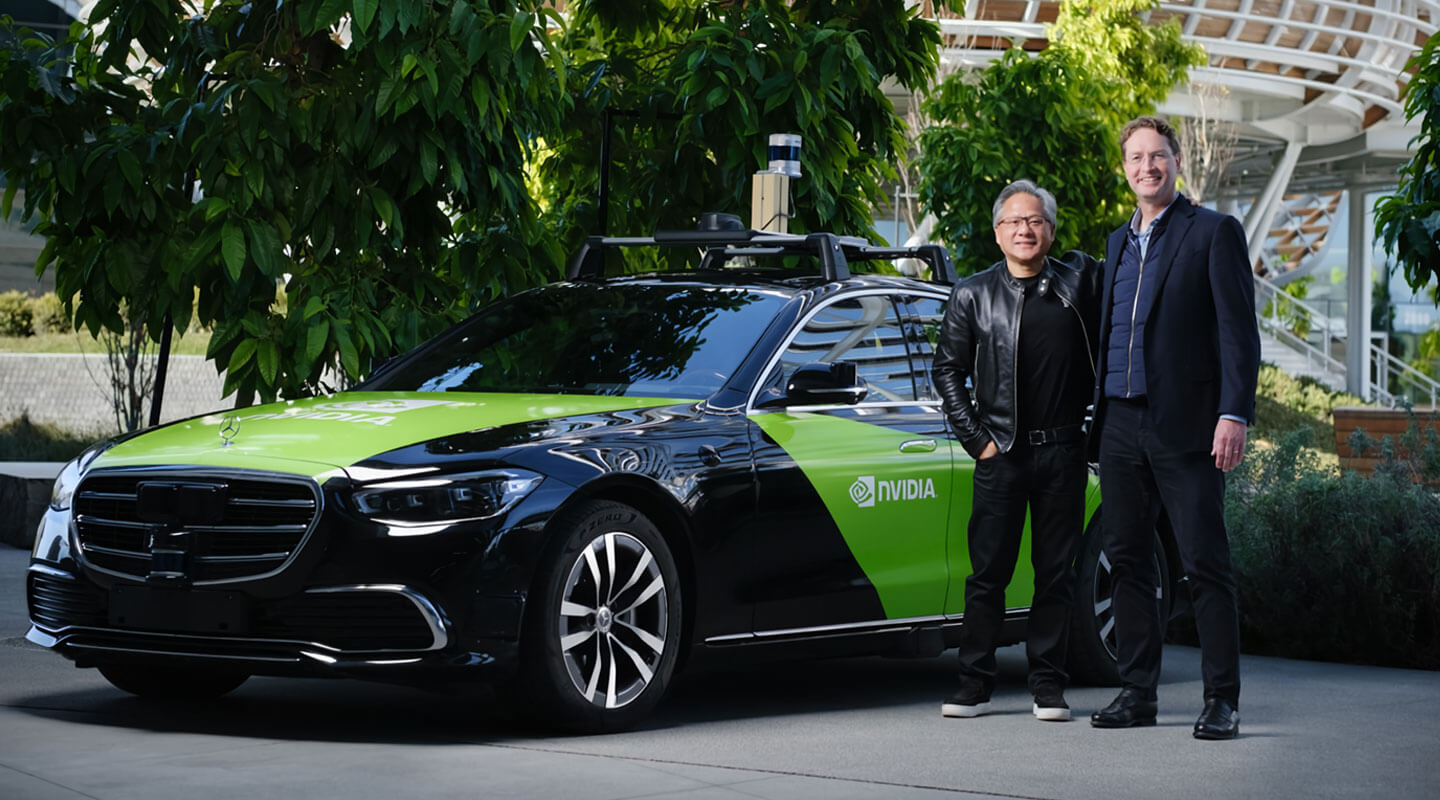
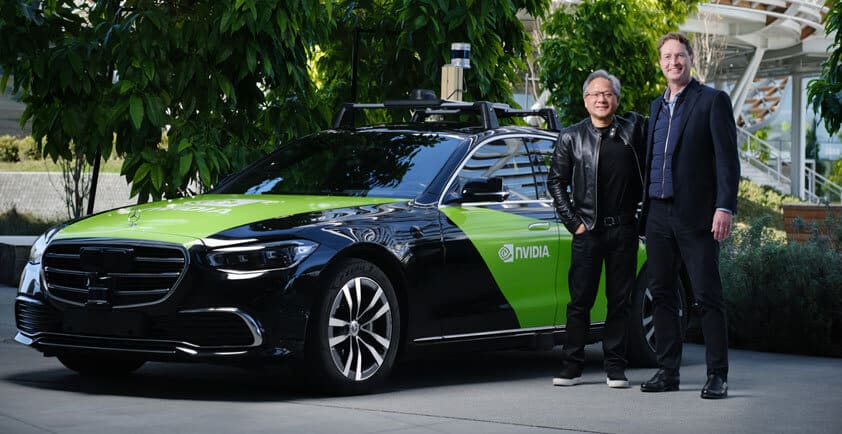
MERCEDES-BENZ TAKING VEHICLE PRODUCT LIFECYCLE DIGITAL WITH NVIDIA AI AND OMNIVERSE
>> Progress on software-defined vehicle collaboration highlighted at automaker’s recent strategy event.
To drive the automotive industry forward, NVIDIA and Mercedes-Benz are taking the virtual road.
NVIDIA founder and CEO Jensen Huang joined Mercedes-Benz CEO Ola Källenius on stage at the automaker’s strategy update event yesterday in Silicon Valley, showcasing progress in their landmark partnership to digitalize the entire product lifecycle, plus the ownership and automated driving experience.
The automotive industry is undergoing a massive transformation, which is driven by advancements in accelerated computing, AI and the industrial metaverse.
"Digitalization is streamlining every aspect of the automotive lifecycle: from styling and design, software development and engineering, manufacturing, simulation and safety testing, to customer buying and driving experiences," said Huang.
Since its founding, Mercedes-Benz has set the bar in automotive innovation and ingenuity, backed by superior craftsmanship. The automaker is shaping the future with its intelligent and software-defined vehicles, which are powered by NVIDIA’s end-to-end solutions.
The Fleet of the Future
Next-generation Mercedes-Benz vehicles will be built on a revolutionary centralized computing architecture that includes sophisticated software and features that will turn these future vehicles into high-performance, perpetually upgradable supercomputers on wheels.
During the event, the automaker took the wraps off its new operating system, MB.OS, a purpose-built, chip-to-cloud architecture that will be standard across its entire vehicle portfolio — delivering exceptional software capabilities and ease of use.
MB.OS benefits from full access to all vehicle domains, including infotainment, automated driving, body and comfort, driving and charging — an approach that allows Mercedes-Benz customers a differentiated, superior product experience.
"MB.OS is a platform that connects all parts of our business," Källenius noted during the event.
Safe Has Never Felt So Powerful
At the heart of this architecture is NVIDIA DRIVE Orin, which delivers high-performance, energy-efficient AI compute to support a comprehensive sensor suite and software to safely enable enhanced assisted driving and, ultimately, level 3 conditionally automated driving.
Running on DRIVE Orin is the flexible and scalable software stack jointly developed by NVIDIA and Mercedes-Benz. Sarah Tariq, NVIDIA vice president of autonomous driving software, joined Magnus Östberg, chief software officer at Mercedes-Benz, on stage to delve deeper into this full-stack software architecture, which includes the MB.OS, middleware and deep neural networks to enable advanced autonomy.
Tariq said, "The companies are working in close collaboration to develop a software stack that can comfortably and safely handle all the complexities that the automaker’s customers may encounter during day-to-day commutes all over the world."
This includes enhanced level 2 features in urban environments where there are pedestrians or dense, complex traffic patterns. Using advanced AI, Mercedes-Benz can deliver a comfortable driving experience that consumers have come to expect, backed by uncompromised safety and security.
With the ability to perform 254 trillion operations per second, DRIVE Orin has ample compute headroom to continuously advance this software with new capabilities and subscription services over the life of the vehicle, through over-the-air software updates, via an app, web or from inside the car.
Additionally, Mercedes-Benz is accelerating the development of these systems with the high-fidelity NVIDIA DRIVE Sim platform, built on NVIDIA Omniverse. This cloud-native platform delivers physically based, scalable simulation for automakers to develop and test autonomous vehicle systems on a wide range of rare and hazardous scenarios.
Manufacturing in the Industrial Metaverse
This software-defined platform is just one piece of Mercedes-Benz intelligent vehicle strategy.
At CES last month, Mercedes-Benz previewed its first step in digitalization of its production process using NVIDIA Omniverse — a platform for building and operating metaverse applications — to plan and operate its manufacturing and assembly facilities.
With Omniverse, Mercedes-Benz can create an AI-enabled digital twin of the factory to review and optimize floor layouts, unlocking operational efficiencies. With enhanced predictive analysis, software and process automation, the digital twin can maximize productivity and help maintain faultless operation.
By implementing a digital-first approach to its operations, Mercedes-Benz can also ensure production activities won’t be disrupted as new models and architectures are introduced. And this blueprint can be deployed to other areas within the automaker’s global production network for scalable, more agile vehicle manufacturing.
Revolutionizing the Customer Experience
Digitalization is also improving the car-buying experience, migrating from physical retail showrooms to immersive online digital spaces.
With Omniverse, automakers can bridge the gap between the digital and physical worlds, making the online car-research experience more realistic and interactive. These tools include online car configurators, 3D visualizations of vehicles, demonstration of cars in augmented reality and virtual test drives.
Östberg summed up, "The partnership with NVIDIA is already living up to its promise, and the potential is huge."
Author - Danny Shapiro - VIDIA’s Vice President of Automotive


